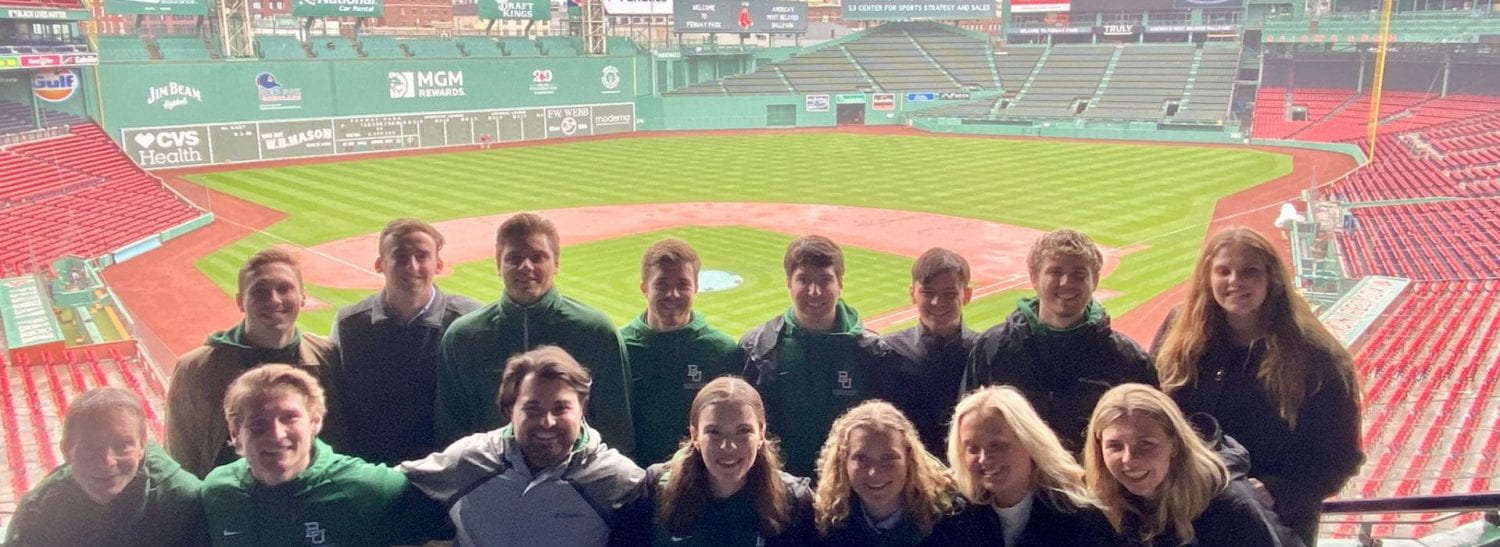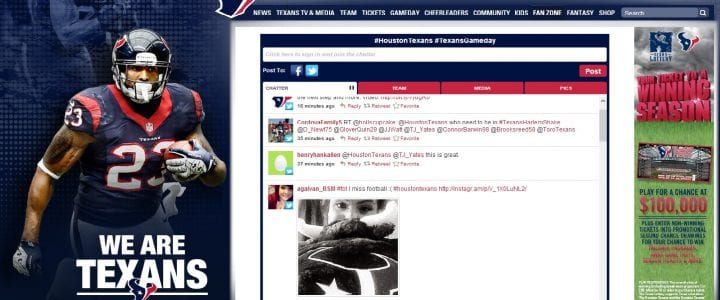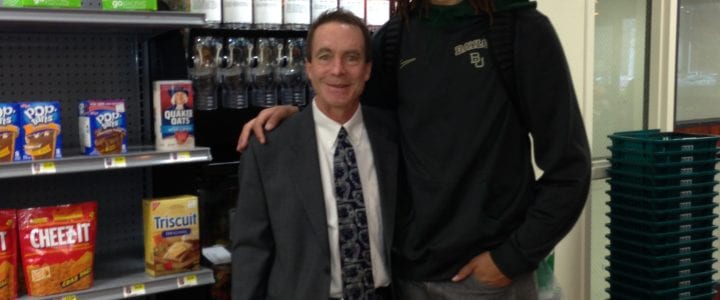by Nick Schenck – March 2013
At the Houston Texans, we publish content on three times as many platforms as we did in 2010. Through Facebook, Twitter, Google+, Instagram, Foursquare and Pinterest, we collectively reach more than 1.4mm fans.
We’re not alone in allocating resources toward social. McKinsey found that 39 percent of companies use social media as their primary digital tool to reach customers. Within four years it is expected to grow to 47 percent.[dropshadowbox align=”right” effect=”lifted-bottom-right” width=”250px” height=”” background_color=”#ffffff” border_width=”1″ border_color=”#dddddd” ]What works best?![]()
The use of imagery. The rise of both Instagram and Pinterest makes it clear visual storytelling has to be part of our social strategy. Photos posted to our San Diego Chargers Facebook page see an astoundingly higher percentage of fan engagement than a typical text-only status update. We now make every effort to combine images with content in innovative ways to foster engagement on all social networks. It’s been said many times, a well-chosen image is worth a thousand words (or more).
Joel Price
 Senior Manager
Senior Manager
Digital Content
San Diego Chargers[/dropshadowbox]
Beyond creating a Facebook page and opening a Twitter account, though, what does it mean to have a successful social media strategy? Our social media strategy centers around our brand, our fans and, ultimately, increasing revenue.
- Brand: Building an authentic dialogue with our fans would not be possible without a strong social media presence. We aim to reach our fans where they spend the most time online, and more than 20% of time spent online is on social media. Also, Mass Relevance shows that 62% of respondents are more likely to engage with social brands.
- Fans: Creating memorable experiences for fans is among our biggest goals. Many fans will first engage with us on social media, so meaningful interactions are crucial. Fans today intuitively contact brands more via social media than through other channels like phones or e-mail.
- Customer service is key in this environment: Fans discuss our brand on social media whether we participate or not. To ignore that conversation would be a lost opportunity.
- Revenue: The more value we create via social media the better. However, it’s important we remain credible to fans in the process. Running sweepstakes, publishing discounts and promoting exclusive player appearances are a few ways to generate value for sponsors and fans on social media. Also, we try to facilitate purchase decisions (i.e. merch, tickets, events) where possible. In many ways, facilitating the growth of a relationship is the purpose of social media. Why? Because the majority (54% according to this survey) indicate that “liking” a brand increases purchase intent.
Other than creating a strategy, I don’t believe there is a holy grail to social media. Since the beginning of advertising, the most effective brands have employed talented writers that know their audiences well and can communicate succinctly.
[dropshadowbox align=”right” effect=”lifted-bottom-right” width=”250px” height=”” background_color=”#ffffff” border_width=”1″ border_color=”#dddddd” ]What works best?![]()
It’s all about the fans. It sounds cliché, but social media is connecting with our fans and providing content they want to talk about. We have tested various promotions, posts and tweets throughout the season. The common theme is : What would you tell a friend about?
Overall, we curate content from our site, games, and fan-submitted-content to share with fans/followers to reinforce passion for their team, the Green Bay Packers.
Garrison Cummings
Marketing Analyst
Green Bay Packers [/dropshadowbox]
Of course, the tools change. I recommend the free tools available to measure your efforts (see below). Better perhaps than other forms of media, digital media lends itself to testing and measurement. Find out what works for your brand and audience and constantly optimize.
- Bit.ly: Use a URL shortener to track click-thrus and discover which content resonates the most.
- CircleCount/AllMyPlus: The best measurement tools for Google+.
- Hashtracking: Track impressions and the reach of specific Twitter hashtags.
- PicMonkey: Images drive engagement on social media. Use this tool. It’s easier than Photoshop.
- Statigram: Instagram is growing rapidly. Track your progress and identify your best content.
- TwitterCounter: Measure your Twitter growth and compare vs. other accounts.


